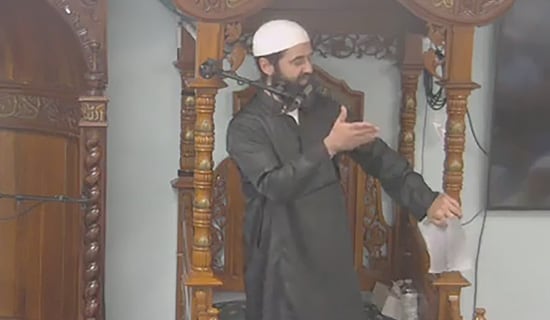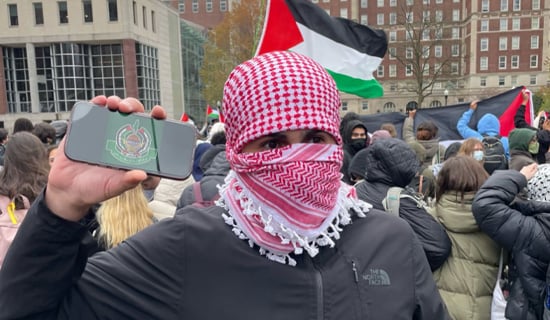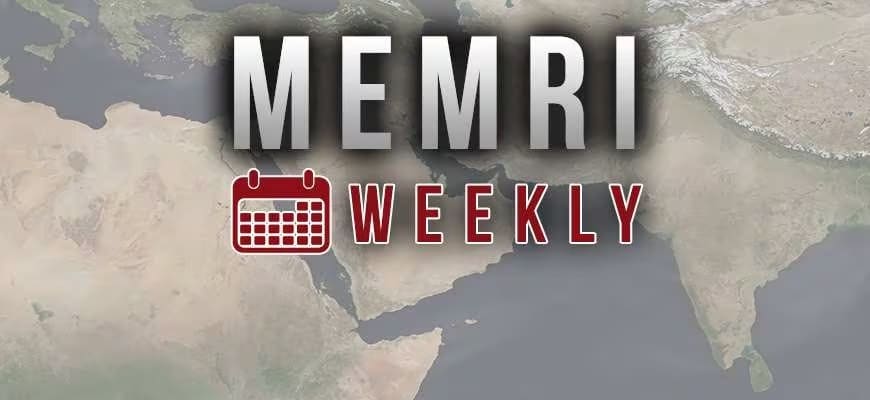Throughout the seven-year crisis in Syria, Iran has exploited the instability in the country to consolidate its presence there. On the military level, it dispatched Shi'ite militias to Syria[1] ADD and established military bases.[2] On other levels, it collaborated with the Syrian regime to change the demographics of the country and turn its Sunni majority into a Shi'ite majority, and acted to gain the support of the local population through preaching and by dispensing material aid.
In the first years of the crisis, these efforts concentrated on central and western Syria.[3] After defeating the opposition forces there, the regime and its allies turned to eastern Syria and the regions close to the Iraqi border, and in late 2017 they announced that they had recaptured ISIS's strongholds in those regions, the cities of Deir Al-Zor and Al-Bukamal. Eastern Syria is of great strategic importance to Iran, because it completes the territorial continuum stretching from Iran to the Mediterranean. Moreover, U.S. forces that support the Kurdish militias are concentrated in that region, east of the Euphrates. Iran's presence there threatens these forces and can thus serve as a bargaining chip vis-à-vis the U.S. It should be noted that, in the recent weeks, Syria and Iraq have been discussing opening the Al-Bukamal border crossing, which will enable free movement of the Iranian forces in the area.
However, Iran does not suffice with free passage across the border, but is acting to consolidate its presence in eastern Syria by the same means it employed in the central and western parts of the country. According to media outlets of the Syrian opposition and Arab newspapers opposed to the Assad regime, since late 2017 Iran has been reinforcing its Shi'ite militias in the region (Iraqi, Afghan and other) and settling militiamen and their families there, and also acting to spread the Shi'a among the locals through preaching and the provision of welfare – thereby changing the demographics of the region to create a Shi'ite, instead of Sunni, majority.
This document reviews reports by Syrian opposition outlets and Arab media opposed to the Assad regime about Iran's efforts to consolidate its presence in eastern Syria.
IRGC Forces, Shi'ite Militias Deployed West Of The Euphrates
On October 13, 2018 the Nors Research center, which opposes the Assad regime, published the map below, showing the deployment of forces in the Deir Al-Zor area at the time. According to the map "Assad's and Iran's militias" control the area west of the Euphrates (marked in red), whereas Kurdish militias control the area east of the river (in yellow), and ISIS controls an area between the two (in grey).[4]
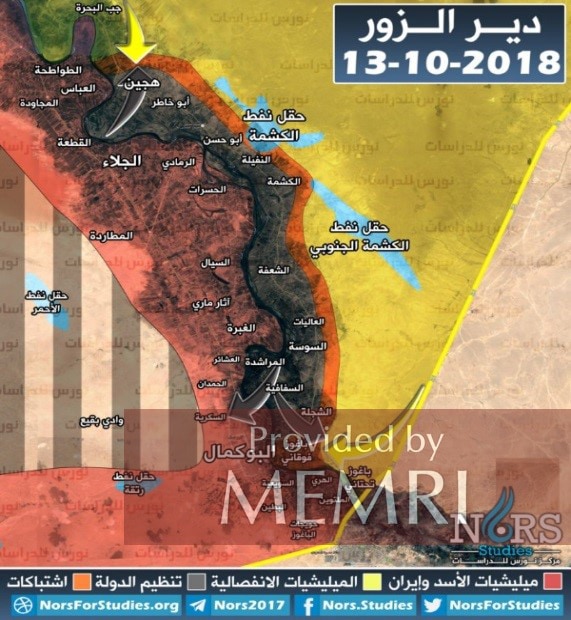
The Iranian forces in eastern Syria include Islamic Revolutionary Guards Corps (IRGC) forces and Shi'ite militias loyal to Iran, chief of them Liwa Fatimiyyoun (a militia of Afghan fighters), and Al-Nujaba and Abu Fadl Al-'Abbas, which are part of the Popular Mobilization Units (PMU). Hizbullah fighters are said to be present there as well. According to Ahmad Ramadan, director of the anti-Assad news outlet Furat Post, the Iranian and Iran-backed forces are deployed on the western bank of the Euphrates, between Deir Al-Zor and Al-Bukamal, and also in the city of Hatla on the east bank of the river, in close proximity to the Kurdish forces.[5] The IRGC's headquarters in the region is located in Al-Bukamal, and the regional IRGC commander is Hajj Suleiman.[6]
To protect the forces from airstrikes like the June 18, 2018 attack on the militias' headquarters south of Al-Bukamal, in which dozens of fighters were killed, many of the forces are stationed in temporary posts and in residential neighborhoods in Al-Mayadin and Al-Bukamal.[7] However, reports claim that the militias occasionally fly their flags over their positions,[8] presumably to display their presence to the local population. The forces in Al-Mayadin are said to be concentrated in a sealed-off zone, which only their members can enter and which is heavily guarded, including by drones.[9] According to one report, the call for prayer heard from that area is now the Shi'ite version.[10]
Syrian Regime Forces, Iranian Forces, Vie For Control Of Territory
Although the Iranian forces and Iran-backed militias cooperate with the Syrian regime forces, according to reports there is also tension between them and competition for control of areas in eastern Syria, as previously happened in other parts of the country.[11] In some cases, the tension has even led to exchanges of fire and to arrests. The Iranian and Iran-backed forces generally have the upper hand, which suggests that they are the ones who are effectively in control. In August 2018, for example, several Shi'ite militias exchanged fire with the regime's National Defense Forces (DNF) as part of struggles for control of territory, and fighters from both sides were killed. According to one report, the Iraqi PMU even dispatched a force to take over a DNF position on the Syria-Iraq border.[12] In October 2018 the clashes recurred, and Iran-backed militias arrested DNF members.[13] Some claim that the Iran-backed militias punish regime forces that persecute locals,[14] which may be part of these militias' effort to gain the locals' support.
The Iranian Forces' Relations With Russia: Coordination Alongside Power-Struggles
The Iranian and Iran-backed Shi'ite militias also vie with the Russians for control of territory, although both sides try to avoid armed clashes. It seems that in this case it is Russia that has the upper hand and the militias generally obey its directives. In October, Syrian opposition websites reported that Shi'ite militias had evacuated several positions in Al-Mayadin and Al-Bukamal in favor of Russian forces, and had retreated to nearby areas in Syria and to Iraq.[15] Several days later Russian army commanders met with IRGC officials, including the organization's commander in the region, Hajj Suleiman, at the IRGC headquarters in Al-Bukamal in order to formulate "a joint operation mechanism" for the forces in the region.[16]
The meeting and the removal of the Iran-backed militias may have been intended to prevent these militias from clashing directly with the Kurdish forces in the region and with the U.S. forces that support them. However, several days later, in early November, Syrian opposition websites reported that the militias had returned to the Al-Bukamal area. According to the reports, Iran dispatched considerable reinforcements to the region, including heavy vehicles, artillery, and militants who had been deployed in the Aleppo and Hama governorates.[17] It is unclear whether this move had been coordinated with Russia. The maneuver of replacing Iran-backed forces with Russian ones was also carried out in the Homs area. According to Syrian opposition websites, in October Iran removed forces from the T-4 base, after Russia asked it to distance its militias from the S-300 anti-aircraft system so as not to give Israel and the U.S. an excuse to bomb it.[18]
Indications That The Iranians Mean To Maintain A Long-Term Presence In Eastern Syria
Measures taken by Iran in eastern Syria, as in other parts of the country, indicate that it means to maintain its presence there for a considerable period of time, not only until the defeat of ISIS and the Syrian opposition, which is the stated goal of the Iranian presence in Syria.
Settling Shi'ite Families In The Region
As stated above, one of the measures taken by Iran to consolidate its presence in eastern Syria is settling Shi'ite militiamen and their families there. For example, according to recent reports, 50 families of IRGC operatives have moved into Al-Mayadin,[19] and in November dozens of families of IRGC operatives and Afghan Shi'ite militiamen settled in Deir Al-Zor and Al-Bukamal.[20] In order to provide them with housing, and apparently also as an economic investment, Iran has been buying up real estate in the region via the Jihad Al-Binaa company.[21] Reports from May 2018 stated that this company had opened a branch office in Al-Bukamal,[22] and was purchasing real estate with the knowledge of the Syrian regime and under the oversight of the regime's governor in Deir Al-Zor.[23]
Recruiting Local Syrians To The IRGC, Shi'ite Militias
In order to maintain its influence in the region even after the cessation of the fighting, when it may be compelled to remove its forces from Syria as part of a settlement, Iran is acting to establish a large support base among the local population by recruiting locals to its forces and also by acting to spread the Shi'ite faith among its Sunni residents. Reports indicate that the IRGC and the Shi'ite militias are recruiting local Sunnis, while exploiting their economic distress and their apprehension about joining the Syrian forces. As part of this they promise the recruits higher wages than those paid by the regime army, deployment in their area of residence, and safety from persecution and arrest by the regime. The militias are also said to be using local dignitaries to persuade locals to join their ranks.[24] Training bases for the new recruits have been established throughout the region; one of them is in the town of Al-Jalaa in the rural area east of Deir Al-Zor.[25]
The local population appears to be responding to these efforts. Reports from November 2018 indicate that a new class of recruits from Dei Al-Zor has joined Hizbullah. Candidates are required to prove they have no criminal record and to provide references from Lebanese or Syrian members or former members of Hizbullah.[26]
Furthermore, the IRGC does not only recruit young Syrians to the ranks of the militias loyal to it, such as the Iraqi Al-Nujaba and Abu Al-Fadl Al-'Abbas militias or the Lebanese Hizbullah. Recent reports claim that it is recruiting locals to its own ranks as well, and that several hundred have already done so, mostly from the area of the town of Al-Quriya near Al-Mayadin.[27]
Spreading The Shi'ite Faith Among Recruits, Other Locals
Iran is also acting to spread the Shi'its faith among the Sunni locals it recruits to the Shi'ite militias and to the IRGC, and among the local Sunni population in general. According to one report, new recruits are required to attend a one-week course in Shi'ite jurisprudence in the village of Basirin south of Hama, which is funded by Iran and supervised by Iranian clerics, and each recruit is paid $22 for taking the course.[28]
SUPPORT OUR WORK

Schools for teaching the Persian language have been established as well. In Al-Bukamal there are three such schools, attended by 200 students aged 8-15, each of whom receives a $20 monthly stipend for attending. A similar school in Al-Mayadin is attended by 50 students. The Deir Al-Zor and Al-Raqqa area has several schools as well, and an Iranian cultural delegation visited the region.[29]
According to a report, Shi'ite clerics in Al-Mayadin cultivate ties with the locals and encourage them to volunteer for the Shi'ite militias and the Iranian forces.[30]
Also as part of its efforts to spread the Shi'a, Iran is establishing Shi'ite religious centers (Hussainiyas) and renovating tombs and sites holy to the Shi'ites which then become destinations of pilgrimage. The Syrian opposition website orient-news.net claims that, in certain cases, Iran has rewritten the history of sites, falsely associating them with the Shi'a.[31] Iran has reportedly opened a Hussainiya in the Al-Quriya area east of Deir Al-Zor[32] and renovated a tomb in the village of Al-Sawi'iya near Al-Bukmal that was destroyed by ISIS when the area was under its control.[33] A report claims that Suheil Al-Hassan, a high-ranking officer in the Syrian army, ordered to establish a religious site of this sort in 'Ain 'Ali, between Al-Mayadin and Mihkan.[34] After the sites are established, they are visited by many busses carrying Shi'ite pilgrims from Iran, Syria and Iraq.[35]
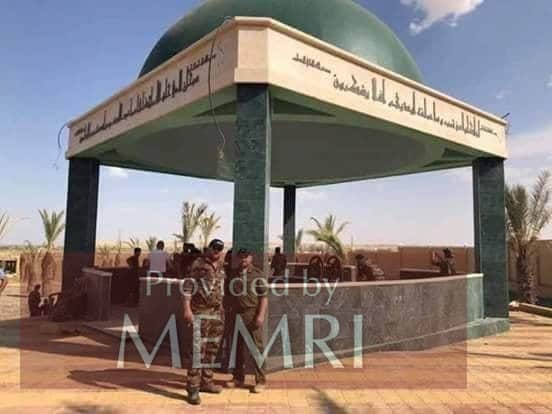
The pilgrimage site in 'Ain 'Ali (image: Orient-news.net, September 2, 2018)
Welfare Activities
Finally, Iran also engages in charity in the region to gain the locals' support. In September 2017, Iran's Tasnim news agency reported that, after the breaking of the ISIS siege on Deir Al-Zor, Iran dispatched 13 truckloads of humanitarian aid to the city, whose distribution was overseen by the Jihad Al-Binaa company.[36]
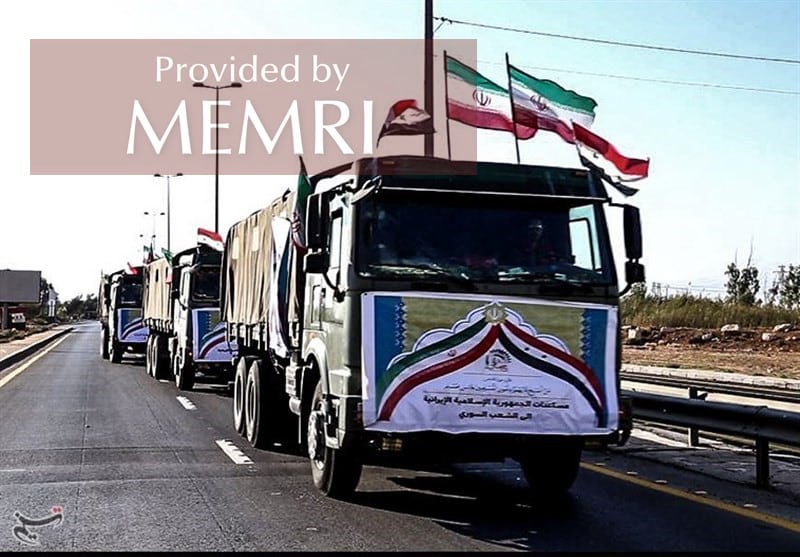
Iranian trucks bringing humanitarian aid to Deir Al-Zor (image: Tasnim, Iran, September 19, 2017 )
The Afghan militia Liwa Fatimiyyoun operates a soup kitchen for residents and displaced persons in the region.[37] In addition, the Shi'ite militias have opened several free clinics in the Dir Al-Zor area, some of which dispense medicines brought in from Iran and Russia. Some of the doctors are Arabic-speaking Iranians while others are locals; the latter earn a salary of about $200 a month. According to locals, many people who visited the clinics indeed embraced the Shi'a and joined Shi'ite militias deployed in the rural areas around Deir Al-Zor.[38]
[1] See MEMRI Inquiry & Analysis No. 1157, Iran Tightens Its Grip On Syria Using Syrian And Foreign Forces, May 4, 2015.
[2] See MEMRI Special Dispatch No. 7464, Reports In Arab Media On Iranian Bases In Syria, May 10, 2018.
[3] See MEMRI Special Dispatch No. 7770, Anti-Syrian Regime Websites: Regime Granting Citizenship To Millions Of Iranians, Hizbullah Operatives To Change Country's Demographics From Sunni To Shi'ite Majority, Conceal The Fighters' Presence In Syria, November 21, 2018.
[4] Norsforstudies.org, October 13, 2018.
[5] Zamanalwasl.net, September 16, 2018.
[6] Facebook.com/EuphratsPost, October 23, 2018.
[7] Al-Quds Al-Arabi (London), November 8, 2018.
[8] Zamanalwasl.net, September 16, 2018.
[9] Syriahr.com, October 22, 2018.
[10] Syriahr.com, December 2, 2018.
[11] See MEMRI Special Dispatch No. 6482, Tension Between Assad Forces, Hizbullah Sparks Intense Battles Between Them In Aleppo Area, June 16, 2016.
[12] Facebook.com/Badia24, August 30, 2018.
[13] Nedaa-sy.com, October 14, 2018; smartnews-agency.com, October 16, 2018.
[14] Orient-news.net, October 13, 2018.
[15] Smartnews-agency.com, October 8, 14, 2018.
[16] Facebook.com/EuphratsPost, October 23, 2018.
[17] Baladi-news.com, November 3, 2018.
[18] Al-Jarida (Kuwait), October 18, 2018, Zamanalwasl.net, October 20, 2018.
[19] Facebook.com/EuphratsPost, November 2, 2018.
[20] Syriahr.com, November 7, 2018; facebook.com/EuphratsPost, November 8, 2018.
[21] This is a Hizbullah-owned construction company which has been on the U.S. terror list since 2007. According to the U.S. Treasury, it is funded directly by Iran and is subordinate to Hizbullah's Shura Council, headed by the organization's secretary-general Hassan Nasrallah. Treasury.gov, February 20, 2007.
[22] Orient-news.net, May 16, 2018.
[23] Smartnews-agency.com, May 17, 2018.
[24] Al-Sharq Al-Awsat (London), November 25, 2018; alasr.ws, January 13, 2017.
[25] Facebook.com/EuphratsPost, October 12, 2018.
[26] Al-Quds Al-Arabi (London), November 8, 2018.
[27] Syriahr.com, October 30, 2018.
[28] Nedaa-sy.com, October 20, 2018.
[29] Zamanalwsl.net, October 2, 2018.
[30] Syriahr.com, November 22, 2018.
[31] Orient-news.net, November 3, 2018.
[32] Orient-news.net, November 3, 2018.
[33] Eldorar.com, October 8, 2018.
[34] Orient-news.net, September 2, 2018.
[35] Syriahr.com, October 30, 2018.
[36] Tasnimnews.com, September 19, 2017.
[37] Syriahr.com, October 22, 2018.
[38] Orient-news.net, May 28, 2018.


